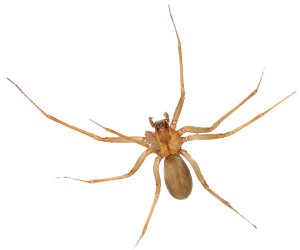The public still wants spiders gone, but more humanely. We need to plan our management actions accordingly.
When I was a child, all I knew of spiders was what Little Miss Muffet taught me: “Along came a spider, who sat down beside her, and frightened Miss Muffet away.”
By age 20, however, I was power-spraying the sides of high-rise hotels with DDT to kill spiders, which were attracted to the buildings from aquatic insects coming off lakes.
Fast-forward some years, and my children were learning, from E.B. White’s Charlotte’s Web, why they shouldn’t harm spiders. Today, my grandchildren are learning how to deal with spiders in a “humane” manner.
I tell you this because in a park near my Florida home, some parents are upset about the presence of large Argiope spiders located along a hiking trail. The trail is lit up at night so it is safer to walk in the area, but the lights were attracting insects, which draw these orb-weaver garden spiders. The park officials’ solution, believe it or not, was to pay someone to physically remove the spiders and relocate them to another area.
This we call integrated pest management (IPM) with a huge emphasis on a humane approach. Welcome to a world where emotion trumps science.
Then there’s the opposite emotional extreme, when a customer suffers from arachnophobia, or there’s a legitimate population of brown recluse, black widow or hobo spiders where serious consequences might occur. Now the scale tips to: “Kill it as soon as possible!”
Hard to handle
Where is the happy medium? There isn’t one. You must approach each situation based on why the spiders are there. Consider what should normally be done and what emotional factors play into each specific situation. You can take several approaches, including:
- Try vacuuming a few spiders, especially ones visible in the upper corner of a room.
- Some species of spiders travel via ballooning. They let the wind blow them as they dangle from a fine spider thread. If the air currents of a building are drawing air in, you can expect spiders to take advantage of this.
- In commercial accounts, spiders are creating recalls of thousands of vehicles. Even one spider in a package of food, a sterilized hospital kit, or a pharmaceutical product, can result in recalls, lawsuits and long-term damage to a company’s reputation. Often in these situations, spiders are unknowingly carried in on pallets (both empty and full) that have been stored outdoors. Pallets used within structures need to be stored indoors. It’s necessary to inspect incoming goods on pallets delivered by trucks, prior to the pallets entering the warehouse. The truck trailers also must be inspected before loading, and the doors of the trailer should be kept closed when loading or unloading is finished.
- Outdoor night lighting is essential for many reasons: safety, advertising and security. Problems can arise from the types of lights and locations that draw insects to exterior doors. For example, spiders can establish homes right where their dinner comes to them. Sometimes the remedy to this problem can be as simple as changing the light bulb color, placing lights on motion detectors or relocating the lights away from the structure. A light shining on the building from a distance actually draws the insects (and spiders) away from the building.
- Find out why the insects and spiders are approaching and getting indoors. Fixing screens and pest-proofing exit doors and pipe penetrations can work wonders.
- Keep grass cut low. Removing debris and keeping all vegetation at least 3 ft. from a building also helps to help eliminate spider harborage.
- Knowing the behavior of the spider can be key. Some predatory spiders chase down their prey and pounce on it. These spiders are easily caught on glueboards (if the customer allows it). Brown recluse spiders (Loxosceles reclusa) definitely fall victim.
- Last but not least, stick with a standard IPM approach: proper sanitation practices, effective pest proofing, covered lighting, vacuuming, a few sticky traps and/or glueboards and, as needed, targeted spot pesticide treatments.
Contact Dr. Austin M. Frishman, BCE-Emeritus Contributor and PMP Hall of Famer, at PMPEditor@northcoastmedia.net.

Leave A Comment